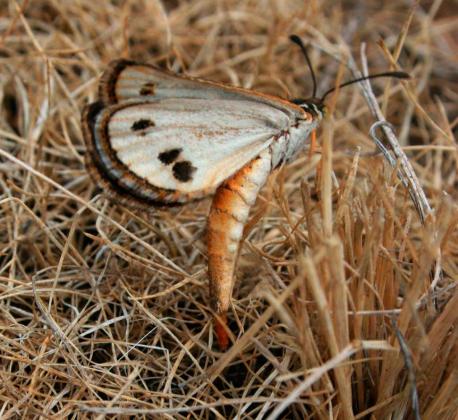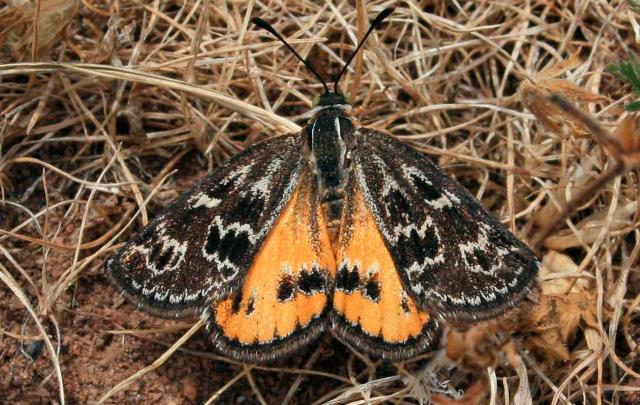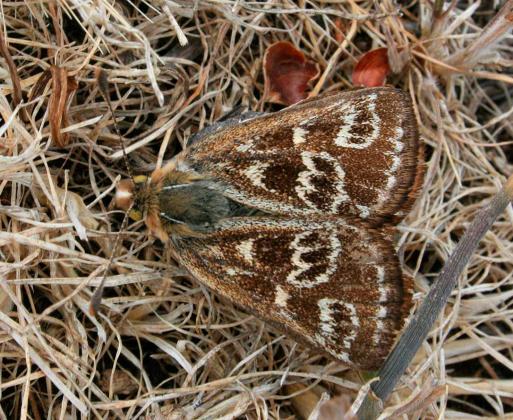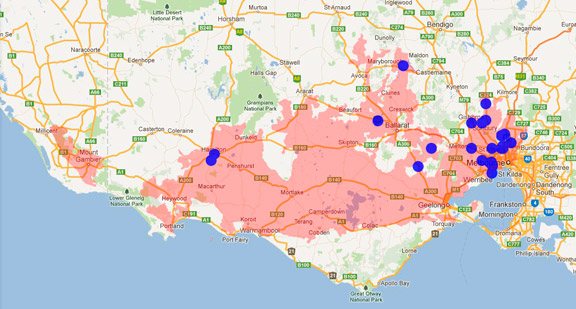A range of teacher professional learning programs will be developed to accompany the Biodiversity of the Western Volcanic Plains online outreach...



Golden Sun Moth
Synemon plana
Active only during the hottest part of hot, sunny, and relatively still days. The adult moths live for 1-4 days. Larvae spend 2 or more years underground. Adult moths emerge from underground between November-December. Females lay 100 to 150 eggs; they rarely fly and mostly walk. Males can make long flights but do not travel more than 100 m away from suitable habitat patches. This means it is difficult for them to colonise new areas at a distance.
| Details | Description |
| Type | Invertebrate |
| Group | Insect - Moth |
| Identifying Characteristics | |
| Distinctive Markings | Day flying moth. Clubbed antennae. The female's upper hindwing is bright orange with black spots along the edges; the male's is bronze-brown. |
| Diet | Herbivore. Larvae feed on the roots of native grasses. |
| Habitat | Native grasslands and grassy woodlands, especially those with wallaby grasses (Rytidosperma spp.), but also grasslands with native red-leg grass (Bothriochloa macra), spear-grasses (Austrostipa spp.), weeping grass (Microlaena stipoides var. stipoides) or kangaroo grass (Themeda triandra). They prefer grasslands with bare ground between tussocks, probably so males can more easily find females. |
| Native Status | Native to Australia |
| Taxonomy | |
| Phylum | Arthropoda |
| Class | Insecta |
| Order | Lepidoptera |
| Family | Castniidae |
| Genus | Synemon |
| Species | plana |

Distribution maps indicate current and historic locations where species have been sighted.
Source: Atlas of Living Australia
| Conservation Status | |
| DEPI Advisory List | Not listed |
| FFG Act | Listed as threatened |
| EPBC Act | Critically endangered |
| FFG Action Statement |
The conservation status of species is listed within Victoria and Australia.
The Department of Environment and Primary Industry (DEPI) Advisory List consists of non-statutory advisory lists of rare or threatened flora and fauna within Victoria.
The Flora and Fauna Guarantee Act 1988 (FFG Act) lists threatened species in Victoria. Under the Act, an Action Statement is produced for each listed species.
The Environment Protection and Biodiversity Conservation Act 1999 (EPBC Act) is the Australian Government’s key piece of environmental legislation, listing nationally threatened native species and ecological communities.



